
Review on Thermaltake Suppressor F1 Mini ITX Tt LCS Certified Cube Computer Chassis - Black by Goro Honda ᠌

I am amazed at how well the product is made, just magically!
Nuance - before the cutout of the "window" for the video card, I advise you to remove its socket, you still won't install it with it (the vidyuha sticks out a bit from the case) and try on the cutout like that. It turns out neat and more or less beautiful. You just need to figure out how to close the hole in the case, but you can’t see it, and also think about how to fix the video card all the same (in my case it rested on the case and does not play, but this is still not Feng Shui). There is a small minus: the power buttons are still too close to the ports. If you stick / poke out the plug / flash drive calmly, thoughtfully, then it’s normal, but when you need it quickly and the system unit is, let’s say, under the table and you have to dodge . I think I understand, then I sometimes cling to the power button. Here the reset button is recessed, you can’t hook it by accident, why couldn’t it be done with the power button as well. Summarizing everything, I liked the case: there is enough space despite the dimensions, the metal is good and painted perfectly, the case fan is there and works (it was written somewhere that it cannot be controlled . I don’t know, my motherboard calmly changes its speed: I tied it to its temperature, adjusted the speed and now in idle it turns off altogether, and when necessary it drives to the fullest). I advise you to purchase, and if you need to save 5 thousand and have a tool, then you can buy microATX instead of miniITX. ps the temperature regime of the components in this arrangement has not changed compared to the tests "on the knee" (that is, without a case at all).
- Everything didn’t fit into the comment section, so it’s like that. Mat. ASUS B350m microATX board, ASUS RX560-O4G video, Xilence M403 cooler 1. We dismantle and throw away the sled for disks, 2. Trying on a mat. and video boards on a shelf in the case, note how much you need to cut under the motherboard and under the video card, 3. Cut out: it turns out that you need to cut 5 centimeters under the motherboard (straight to the edge of the case), a couple of centimeters under the video camera (cut off part of the ventilation grille). It is better to cut with an electric jigsaw, do not take wire cutters, you can also use a hacksaw, but it is not very convenient - it will go to the side, the cut will be at an angle (but if there is no jigsaw, it will roll anyway), 4. We put the bar from the mother, and the board itself on the shelf. We mark the holes on the shelf for fastening. The microATX has 3 holes at the bottom of the board, the rest fall into an empty place. We remove mother, we drill. 5. We take bolts m6x20 (it can be both longer and narrower, which is available). We insert it into the holes from the bottom, tighten it with a nut from the top, then a washer and another nut, such a "buter" is just under the existing 4 racks so that the board lies on them, 6. Isolate the existing racks, I pasted the blue one on them! (required :) ) electrical tape, 7. Before installing the PSU and if you have a 2.5 disk, take it and screw it on the left side (when viewed from the back of the case) onto the shelf in a vertical position. There are holes in the shelf, of course they do not coincide with the holes in the disk, therefore it is better to drill under the second bolt (I scored and instead of drilling I glued it on a 2-sided electrical tape), 8. If there is a 3.5 disk, then it can be hung on the same side directly on the wall (in the upper part! Where is the motherboard): in the vent. the grate matches 3 holes with a 3.5 disk, if you put it at an angle a little. I screwed it through the dust mesh: I twisted 3 holes in it with a screwdriver and put it on the complete screws with rubber bands, 9. Well, then the assembly: we throw all the cables, put the PSU, "string" the motherboard onto our 3 pins, tighten it with nuts from above, connect the cables and the front panel.
New products
Comments (0)
Top products in 🎒 Computer Cases
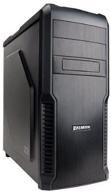
Zalman Z3 M ATX 💻 Tower Computer: A Compact and Powerful Machine

77 Review

Computer case be quiet! Pure Base 500 black

32 Review
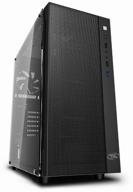
Computer case Deepcool Matrexx 55 MESH black

64 Review
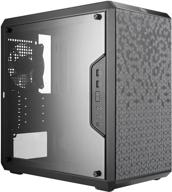
MasterBox Q300L Micro-ATX Tower with Magnetic Dust Filter, Acrylic Side Panel, Adjustable I/O & Ventilated Airflow, in Black

40 Review
Another interesting products
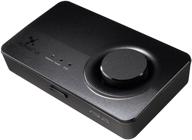
Enhance Your Audio Experience with ASUS Xonar U5 Sound Card

13 Review
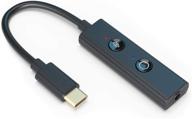
Enhanced Sound Blaster Play! 4 Hi-res USB-C DAC and Sound Adapter with VoiceDetect Auto Mic Mute/Unmute, Dual Noise Cancellation, Bass Boost, Dynamic EQs | Ideal for Windows PC Video Calls

13 Review
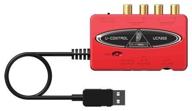
External sound card BEHRINGER U-CONTROL UCA222

16 Review
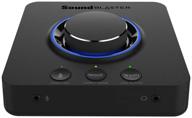
Enhance Your Audio Experience with the Creative 70SB181000000 Sound Blaster X3 Digital Audio Converter - Black

13 Review

